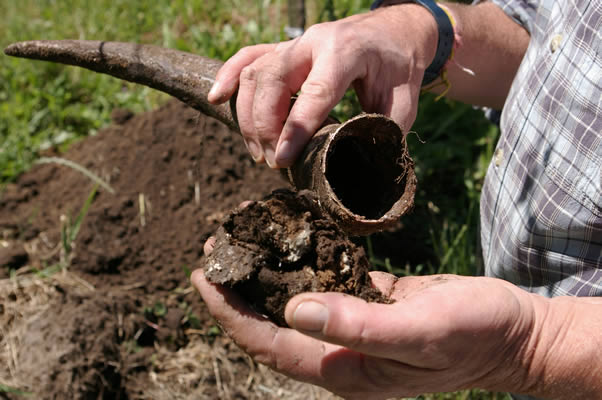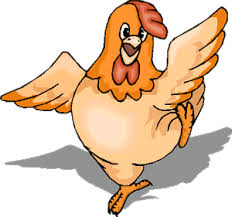 Even though the footprint of Little Italy has shrunk dramatically, the prevalence of really good Italian food and wine in New York is mind boggling. After our lunch with Kim on Monday, we hopped on a train down to Canal Street and walked over to Grand and Mott Street to the famed Di Paolo's. Operated by the Di Palo family since 1925, Di Palo's is New York City's best source for artisanal Italian specialty foods from all regions of Italy. They've also just opened a small wine shop right next to the store. Our friend Cynthia recommended this beautiful little shop with
Even though the footprint of Little Italy has shrunk dramatically, the prevalence of really good Italian food and wine in New York is mind boggling. After our lunch with Kim on Monday, we hopped on a train down to Canal Street and walked over to Grand and Mott Street to the famed Di Paolo's. Operated by the Di Palo family since 1925, Di Palo's is New York City's best source for artisanal Italian specialty foods from all regions of Italy. They've also just opened a small wine shop right next to the store. Our friend Cynthia recommended this beautiful little shop with  an easy vibe where we met Sal Di Paolo who was holding down the fort for his son who actually runs the store. Sal poured us a taste of two lovely wines he had open from Calabria and set out a big platter of meats and cheeses from next door for us to sample. We asked Sal about local Italian wine bars and where to get a good espresso.
an easy vibe where we met Sal Di Paolo who was holding down the fort for his son who actually runs the store. Sal poured us a taste of two lovely wines he had open from Calabria and set out a big platter of meats and cheeses from next door for us to sample. We asked Sal about local Italian wine bars and where to get a good espresso.Leaving with our list in hand, we wandered next door to check out the cheese and meat selections. Truly like walking into a Salumeria in Italy, we were awed by the selections, imported directly from Italy and handselected by Lou DiPaolo. The variety of cheeses, cured meats, pastas, olive oils and other specialty foods left us salivating and wishing we could purchase a few things, but we were on the run and had many hours to go before w
 e could actually refrigerate something.
e could actually refrigerate something.After a macchiato at the 100 year old Ferrara's, a family owned Italian Cafe operated by the fifth generation. Called America's first espresso bar, it's a bit pricey but the old world atmosphere is not to be missed!
We then jumped in a cab headed over to the West Village to meet our friend Lisa for a glass of wine. With only 25 seats, 'ino on Bedford may be small in size, but big on it's offerings! Owner Jason Denton is a disciple of Mario Batali and has made his mark on the Italian food scene in New York with Bar Milano, 'inoteca and Lupo with 'ino opening in 1998. A great wine list and an amazing array of food selections for such a tiny kitchen featuring antipasti, cheese and meat plates, bruschetta, panini, tramezzini, salads and soups - all delivered in a cozy, friendly environment. We got a great bottle of Prosecco to celebrate Lisa's birthday and a little bruschetta to hold us over 'til dinner. 'Ino is not to be missed!
Needing a walk, we headed on foot back to Little Italy to find some of the wine bars that
 Sal from DiPaolo's recommended. We ventured into the dimly lit Epistrophy at 200 Mott Street and grabbed the few remaining seats at the bar. With a focus on Sardinian wines, the place feels more like a living room with abstract paintings, shelves full of books lining the walls, cushioned benches and an a antique plush sofa surrounding a low coffee table. Needing to eat something green, we ordered an arugula salad with bresaola, an air-dried salted beef aged 2-3 months and made from eye of round. With a little shaved pecorino cheese and a simple olive oil and balsamic vinegar it was superb! But write down the address, there is no sign outside so you have to know where to find it. And since Sal's choice was so perfect, we decided to try another one of his recommendations.
Sal from DiPaolo's recommended. We ventured into the dimly lit Epistrophy at 200 Mott Street and grabbed the few remaining seats at the bar. With a focus on Sardinian wines, the place feels more like a living room with abstract paintings, shelves full of books lining the walls, cushioned benches and an a antique plush sofa surrounding a low coffee table. Needing to eat something green, we ordered an arugula salad with bresaola, an air-dried salted beef aged 2-3 months and made from eye of round. With a little shaved pecorino cheese and a simple olive oil and balsamic vinegar it was superb! But write down the address, there is no sign outside so you have to know where to find it. And since Sal's choice was so perfect, we decided to try another one of his recommendations.Needing help with digesting everything we've been eating and drinking, we set off on foot again looking for Il Bagatt
 o, a Sicilian wine bar/restaurant on the lower east side. Unfortunately it was closed on Mondays which forced us to go next door to Il Posto. A bit more polish and pretense than the last two bars, but still a beautiful space and offered a great contrast. Their menu looked delicious so we decided to try a few things and ordered Scaialatielli, a simple dish from Sorrento with freshly made pasta and a tomato basil sauce, and Broccoli Rape e Salisiccie, grilled sweet and spicy sausage over broccoli rape with olive oil and garlic. Paired with an Aglianico from Campagnia producer Fontanavecchia, it was truly delicious and an amazing pairing.
o, a Sicilian wine bar/restaurant on the lower east side. Unfortunately it was closed on Mondays which forced us to go next door to Il Posto. A bit more polish and pretense than the last two bars, but still a beautiful space and offered a great contrast. Their menu looked delicious so we decided to try a few things and ordered Scaialatielli, a simple dish from Sorrento with freshly made pasta and a tomato basil sauce, and Broccoli Rape e Salisiccie, grilled sweet and spicy sausage over broccoli rape with olive oil and garlic. Paired with an Aglianico from Campagnia producer Fontanavecchia, it was truly delicious and an amazing pairing.One last note for the night, we went back over to the West Village to our friend Lisa's bi
Being serious food snobs, we have been truly impressed by EVERYTHING we've had so far and can't wait for our next outing! More later on the Vino 2009 conference and our amazing experience at Felidia...

















